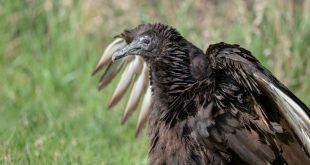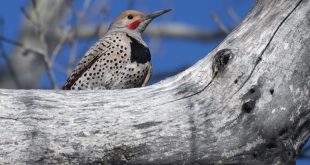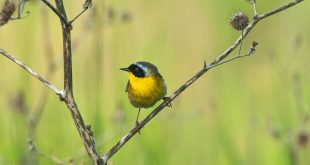With four Whooping Cranes already in Texas and four more recently reported along the Platte River, it is time to remind folks to be on the lookout for Whooping Cranes in Nebraska. Over the next several weeks the rest of the population of Whooping Cranes in the Central Flyway is expected to migrate through Nebraska. The Nongame Bird Program leads our agency’s efforts to track these birds as they move through the state, but we rely on a great deal of cooperation and assistance internally and externally. For example, our Wildlife and Law Enforcement Division staff routinely follow-up on Whooping Crane reports and do a lot of the heavy lifting. We also work with other conservation entities, such as U.S. Fish and Wildlife Service, The Crane Trust, and the Platte River Recovery Implementation Program, in tracking Whooping Cranes. Information from our individual and collective efforts is used by a wide-range of agencies and conservation groups to positively affect Whooping Crane conservation and recovery efforts. And I have not even mentioned other groups, such as Audubon, Ducks Unlimited and The Nature Conservancy that own, manage and improve habitat used by Whooping Cranes. Point being, there are a lot of individuals and groups that are doing good things for Whoopers.

Back to my point about reporting sightings. Individuals may report Whooping Crane sightings to any Commission office, the U.S. Fish and Wildlife Service, or by calling the Crane Trust’s Whooper Watch hotline. Contact information is as follows:
- Nebraska Game and Parks Commission: 402-471-0641
- USFWS office: 308-382-6468, ext. 10
- Email submission may also be sent to joel.jorgensen@nebraska.gov
Regardless of how sightings are reported, the most important point is to report sightings to one of the aforementioned entities. Observers are encouraged to record the number of birds, location, type of activity (e.g., flying, feeding), and number of adults and immatures if it can be determined. Other species are occasionally reported as Whooping Cranes and I briefly covered this topic last fall in this blog post HERE. Click the link and be sure to take a look at similar species if you unsure about a sighting and your identification.

Whooping Cranes that migrate through the Central Flyway are often referred to as the Aransas-Wood Buffalo flock. Cranes from this population migrate, generally in small groups, from wintering sites at and around Aransas National Wildlife Refuge in Texas to breeding sites at and around Wood Buffalo National Park in Alberta. In the early to mid-20th Century, this population was reduced to fewer than twenty individuals and was perilously close to extinction. As a result of legal protection, such as the Endangered Species Act and the Nebraska Nongame and Endangered Species Conservation Act, and conservation efforts, Whooping Crane numbers have slowly increased.
The U.S. Fish and Wildlife Service recently provided an update about the Aransas Wood-Buffalo Whooping Crane flock. In an earlier update, the Service provided a mean estimate of 304 Whooping Cranes during the winter of 2013-14, up from 257 the previous winter. The 2013-14 estimate included 39 juveniles and 116 adult pairs. It is important to note there is uncertainty with reported estimates because they are derived from a statistically-based survey. The survey results do indicate the Aransas-Wood Buffalo population continues to slowly increase. The Canadian Wildlife Service stated earlier this year that 32 Whooping Cranes fledged during the 2014 breeding season.
Individuals fortunate to have the opportunity to view Whooping Cranes are reminded to respect the birds. Whooping Cranes should not be approached. Any person who harasses Whooping Cranes puts the birds at risk and is possibly in violation of state and federal law. Enjoy the birds if you are lucky enough to see them, but please respect them.
This post was originally published March 26, 2014. It was updated October 16, 2014.
 Nebraskaland Magazine
Nebraskaland Magazine




